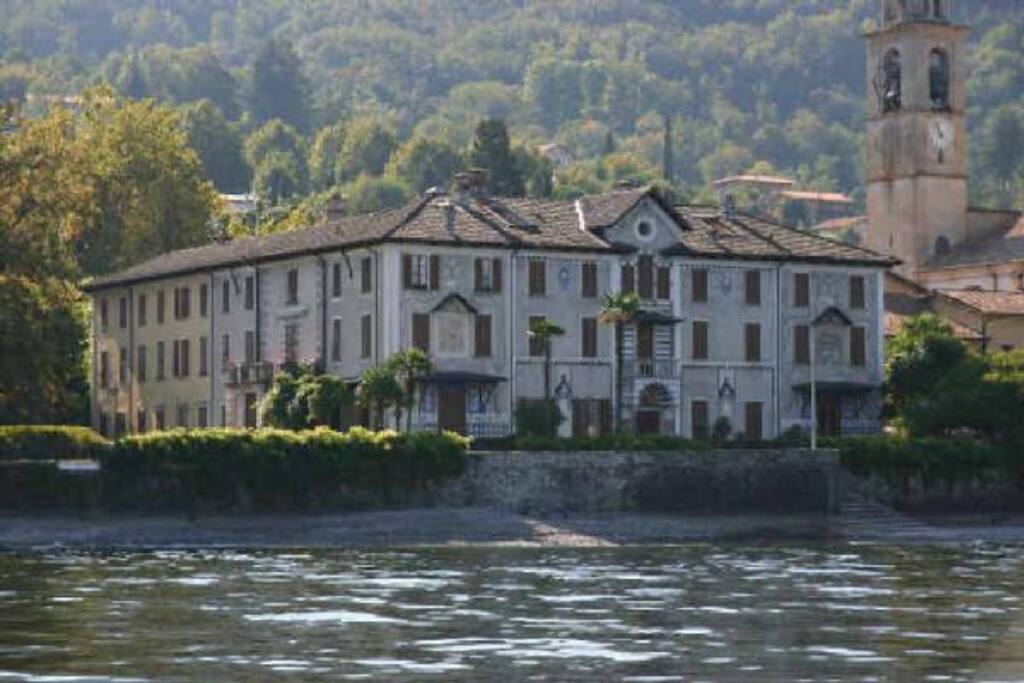Landschlacht, Switzerland, 16 November 2017
I hate November: shorter days (dawn still incomplete after 6 am, dusk already started at 1600), grey clouds ever threatening rain, blocking the sun by day and the stars by night.
November with its month flower, the chrysanthemum, a symbol of adversity, grief and death.
And I miss seeing the Lake under blue skies by day and the stars beyond my grasp overhead above the lamplightless-after-midnight streets that usually makes life for me in Landschlacht worthwhile.
I like slipping outside onto our balcony, sprawl upon a deck chair and gaze out upon a sky full of stars.
(See Thus one journeys to the stars of this blog regarding star spotting in Landschlacht and Zürich.)
I wish it were August again and we were once again exploring Italy….
(For a description of the journey through Switzerland and Italy leading to Como, please see Canada Slim and the Evil Road, …..and the Apostle of Violence, …..and the Road to the Open,……and the Quest for George Clooney, …..and the Injured Queen, …..and the Isle of Silence, …..and the Inappropriate Statues, …..and the Life Electric, …..and the Distant Bench, …..and the Smarter Woman, of this blog.)
Lake Como, Italy, 3 August 2017
It was the kind of road my wife both loved and hated: curvy with high vistas of great scenery, but demanding constant alertness for traffic and pedestrians with no more sense than God gave a cantalope.
There are three big lakes in Italy which reach a depth of more than 300 metres and cover an area of hundreds of square kilometres.
The most west is Lago Maggiore, the most east is Lago di Garda, the central one is Lago di Como.
Lago di Como is distinguishable from its charateristic shape of an upside-down “Y”.

(The Lake of Constance is distinguishable as an eastwardly swimming fish.)

The triangle formed by the two branches of the Lago is named the Triangolo lariano. (the Larius Triangle)(Larius is the Latin name for the Lago.)
The eastern shore of Lago di Como, stretching from flat marshes in the north to the lake´s right leg, Lago Lecco, overshadowed by the sawlike ridge of Monte Resegone, is often as sunless as November on the southern shore of the Lake of Constance (Bodensee) is.
This lack of direct sunlight consequently means that the eastern shore is less visited than the western.
There are few places to stay and and these are not easily accessible scattered among and between the quiet villages that line the shore from Como to Bellagio.
The S5340 feels like an old military road, less concerned with tourist infrastructure as it is with the simple linkage of the lakeside communities.
We left Como after a stay of three glorious days and nights, from the Sant´ Agostino quarter, passed the funicular that runs to Brunate, ascending away from the city.
We reached Blevio with its Villa Taglioni, which once belonged to the Swedish ballet dancer Marie Taglioni (1804 – 1884), the daughter of an Italian choreographer father and a Swedish ballerina mother.

Above: Marie Taglioni
Taglioni was a central figure in the history of European dance and she is credited with being the first ballerina to truly dance en pointe.
Taglioni was married to Comte Auguste Gilbert de Voisins in 1832, but separated in 1836.
She later fell in love with Eugene Desmares, a loyal fan, who had defended her honour in a duel.
He later died in a hunting accident.
When her father Filippo was appointed the ballet master at the court opera in Vienna, there was a decision that Marie would debut her dancing career in the Habsburg capital.
Her father created a rigourous six-month training program where she would hold positions for 100 counts.
Her training was conducted daily and consisted of two hours in the morning with difficult exercises focusing on her legs and two hours in the afternoon focusing on adagio movements that would help her refine poses in ballet.
She focused her energy on her shape and form and less on bravura tricks and pirouettes.
Taglioni would dance in her father´s court opera ballet as well as in Munich and Stuttgart before joining the Paris Opéra, where she would rise to fame.
She would later dance in St. Petersburg, where “the cult of the ballerina” was so strong that a pair of her pointe shoes were sold for 200 rubles, cooked, served with a sauce and eaten by a group of her fans.
She would even perform for Queen Victoria.
Taglioni retired from performing in 1847 after been active since 1824 and began to chereograph and judge other ballet dancers´ performances.
Her only choreographic work was Le Papillon, wherein her student Emma Livry died when her costume was set alight by a gas lamp used for stage lighting.
Taglioni died in Marseille, the day before her 80th birthday.
Her body was moved to Montmartre Cemetery in Paris.

Above: Montmartre Cemetery with the rue Coulaincourt viaduct passing through it
Local dancers began leaving their worn toe shoes on her grave as a tribute and thanks to the first toe dancer.
In the local Blevio cemetery of the Ferranti chapel lies buried the Italian soprano opera singer Giuditta Pasta (née Negri)(1797 – 1865), the Maria Callas of the 19th century.
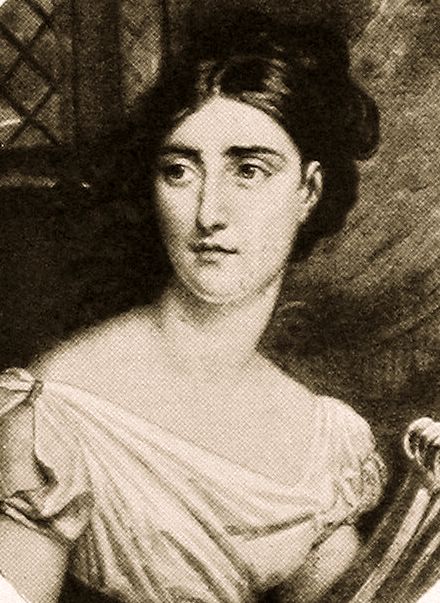
Above: Giuditta Pasta
From 1823 to 1854, Pasta would perform in Milan, Naples, Venice, Paris and London.
Her voice was such that composers, like Stendhal and Bellini, would create roles specifically for her to sing.
Her voice was said to be clear and powerful, encompassing tones that ranged from fine and full-bodied to husky and harsh.
Her voice was said to resonate with a magnetic vibration that exercised an instantaneous and hypnotic effect upon the soul of the spectator, a voice directed towards expressing the most intense passions accompanied by physical movements unknown and unseen before in lyrical theatre.
Her voice is silent now.
There are beautiful Villas near the lakeside square at the boat wharf: Cademartori, Da Riva and Pozzi.
Through the tunnel, the provincial road continues on towards the town of Torno.
Before Torno, there is a cartway branching off to Piazzaga`s famous ancient tombs and Monte Piatto with its Pietra Pendula (pendulum stone) near the small church which honours Mary´s visit to Elisabeth.

Up the mountain above Torno is the church of San Giovanni, characterised by a magnificent Renaissance marble portal and said to preserve a sacred nail from the Cross of Jesus.
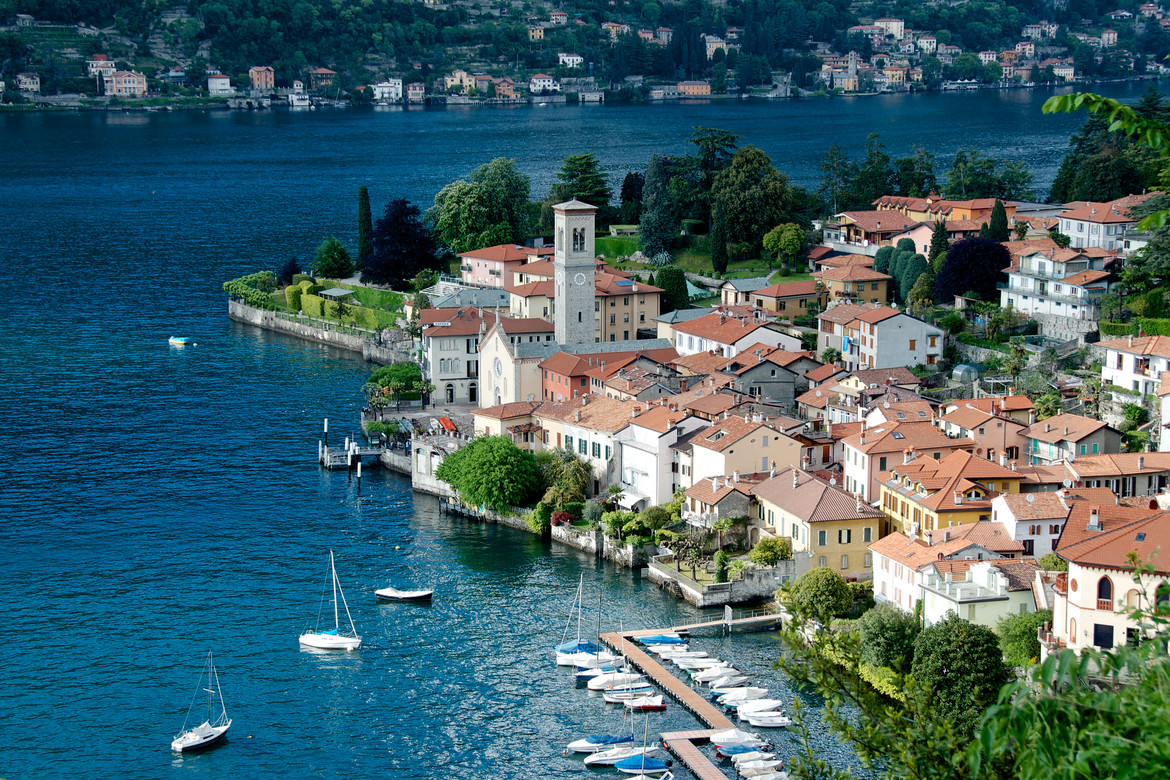
Above: The town of Torno, Lombardy, Italy
Near San Giovanni, a path leads to the Villa Pliniana near an awe-inspiring cascade praised by both Pliny the Elder and Pliny the Younger as well as Leonardo da Vinci.

Above: Villa Pliniana
(Please see Canada Slim and the Inappropriate Statues for discussion about the Plinys, uncle and nephew.)
Pliniana rises above the lake, embraced by greenery.
Built in 1500 by Giovanni Anguissola, the Villa Pliniana – named after Pliny the Younger´s whose estate this once was – has hosted writer Ugo Foscolo (1778 – 1827), opera composer Gioschino Rossini (1792 – 1868), poet Giovanni Berchet, writer Marie-Henri Beyle aka Stendhal (1783 – 1842), the poet Percy Shelley (1792 – 1822), and writer Cristina Belgioioso (1808 – 1871), but the Villa did not welcome us as it remains closed to the hoi polloi such as my wife and I.
Torno is situated in an ideal position above a promontory and stands out as a typical medieval village, which is surprising when one considers the Spanish razed it to the ground in 1522.
Some of the houses are gathered around the church of Santa Tecla and the beautiful little square on the pier by the lake.

Above: The Church of Santa Tecla, Torno, Italy
Remaining suspended high above the shore of the lake, the S5340 passes through the hamlet of Palanza with its, still in working condition, big wooden press from the 1500s.
Heading onwards towards Bellagio, the traveller soon comes to the hamlet of Careno, stone houses clinging to the mountain along steep pathways that can only be accessed on foot.
Above: Careno
At the top of the town there is the Masera Grotto with a pond and a large hall that displays numerous ammonite fossils.
Above: The Masera Grotto, Careno, Italy
But it is Nesso that most people want to see, easily the most photographed town on the Lago di Como.
Above: Nesso
Situated at the mouth of the Tuf and Nosse Valleys, streams descend to create a picturesque haven of rocks forming a perfect canyon and cascade of water.
Above: L´Orrido Nesso
Descend the tiny streets and stairways to the lake and stand upon the old bridge that joins the two shores of these streams and view the simple lovely majesty of this cascade.

Above: Nesso
Just beyond the northern entry of the S5340 into Nesso there is a road on the right that climbs above the lake to Vico with its small Romanesque church of Santa Maria filled with precious frescoes, passes through Erno that has been making metal nets for generations, rises to the Colma di Sormano and the space observatory of Brianza, then descends to Valassina and the Sanctuary of the Madonna del Ghisallo where souvenirs of the greatest champions that ever rode a bicycle are preserved on the walls and ceilings.
But we forego this pleasure and continue upon the cliff clinging road, hellbent to reach Bellagio.
Everything is a blur of trees and cliffs and moments of close calls of we hitting someone/something or the reverse scenario.
Places and placenames are barely registered: Crotto, Pescau, Bagnana, Rozzo, Sossana, Villa and the town of Lezzeno.
Cars have stopped upon the Punta della cappelletta to catch a lovely look upon the lake and Comacina Island.
The road remains panoramic as we see Tremezzina and the Villa Carlotta on the oppposite shore.
Above: Villa Trotti
And Villas never stop appearing: Villa Trotti, determinedly exotic with neo-Gothic mixed with Moorish design surrounded by Chinese and Japanese plants, the Villa Trivulzio with its grand English garden, and finally the Villa Melzi.
Above: Villa Trivulzio
Every traveller soon discovers that there are names of famous individuals that are repeatedly stubled upon as they too were travellers.
For us, we constantly seem to run into the ghosts of Frankenstein author Mary Shelley and composer Franz Liszt in our travels in Switzerland and Italy.
(For a description of Mary Shelley´s travels, see Canada Slim and the Evil Road, and Canada Slim and the Road into the Open of this blog, as well as Mary Shelley`s Rambles in Germany and Italy.)

Above: Mary Shelley (1797 – 1851)
Villa Melzi, Bellagio, Italy, 6 August 1840
“This evening we crossed again to visit…..the opposite bank.
Villa Melzi is a very pleasant country house.
Its marble halls and stuccoed drawing rooms are the picture of Italian comfort – cool, shady and airy.
The garden has had pains taken with it.
There are some superb magnolias and other flowering trees, but one longs for English gardening here.
What would not some friends of mine make of a flower garden in Italy: how it would abound and run over with sweets – no potting and greenhouses to check, no frost to decimate.
The Italians here know not what flowers and a flower garden are.”
(Mary Wollstonecraft Shelley, Rambles in Germany and Italy)
Villa Melzi, Bellagio, Italy, 3 August 2017
I am not so certain if Fulco Gallarati Scotti, the present owner of the Villa Melzi d´Eril (to give its full name) would agree or approve of Mary Shelley´s opinion.
Above: Villa Melzi d´Eril
The Melzi Villa and gardens have belonged to the Scotti family for more than 90 years and I am certain that Fulco is proud that every year tens of thousands of tourists descend upon the d´Eril property.
As early as 1821, Davide Bertolotti (1784 – 1860) in his Viaggio al lago di Como (Journey to Lake Como) praised the sight of the Villa and its wonderful gardens.
In 1831, Cesare Cantu (1804 – 1895) in his Guida al Lago di Como consolidated the Villa´s fame by mentioning how magnificent Melzi was with an annexed “very elegant oratory”, surrounded by “a garden made delightful by its location and its variety of plants and flowers”.

Above: Cesare Cantu
In 1912, the Villa and the gardens Melzi d´Eril of Bellagio, designed and built between 1808 and 1831, were declared to be an Italian National Monument and thus came to be officially considered as part of the historic and artistic heritage that remains guarded by the State.
The beauty began on a bloody battlefield.
Early 19th century European history is marked by the great Napoleonic campaign between 1796 and 1814, when the Austrians were chased out of northern Italy to be replaced by the French.
Though French occupation was a period less than twenty years long, it was characterised by a rapid succession of military and political events and intense cultural changes, of which Francesco Melzi d´Eril (1753 – 1816) would play a significant role.

Above: Francesco Melzi d´Eril
Francesco was born in Milan into a family of ancient nobility known since the 14th century.
His father was Count of Magenta; his mother was a Spanish noblewoman.
Francesco completed his education in Milan and also travelled extensively to England, Spain and France widening his cultural experiences.
As a member of Milan´s Consiglio die Sessanta Decuroni, the city´s administrative representatives, Francesco met Napoleon (1769 – 1821) on the battlefield of Lodi in 1796 and presented him with the symbolic keys to the city.
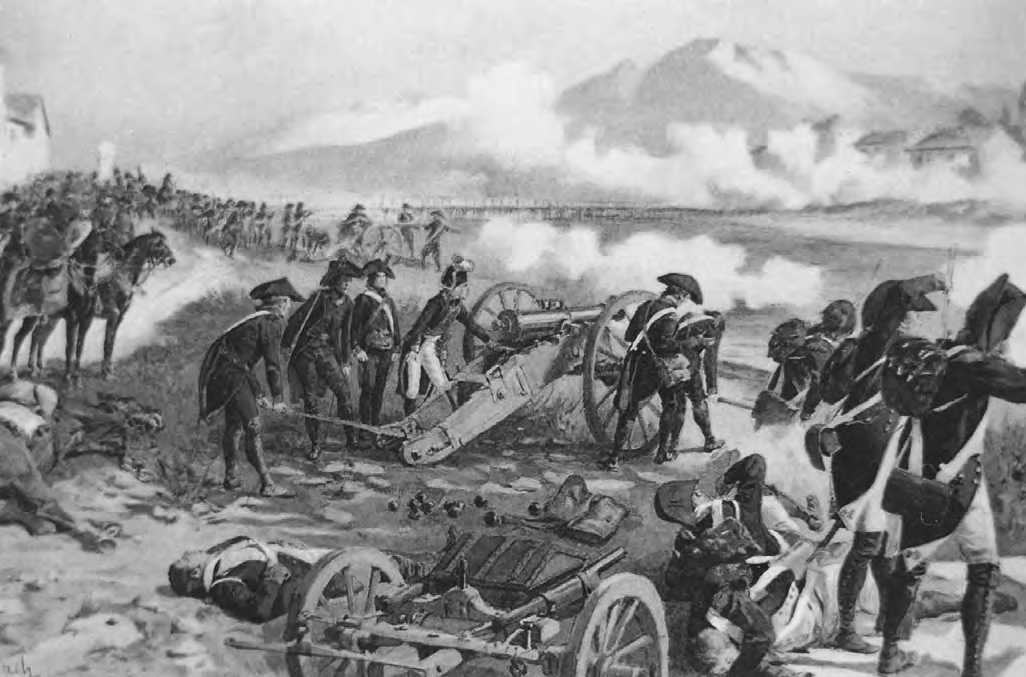
Above: The Battle of Lodi, 10 May 1796
Napoleon appreciated Melzi since this first meeting, considering him a cultivated and balanced man, so he entrusted him with political and diplomatic duties over the newly-created Cisalpina Republic in the turbulent years from 1797 to 1802.
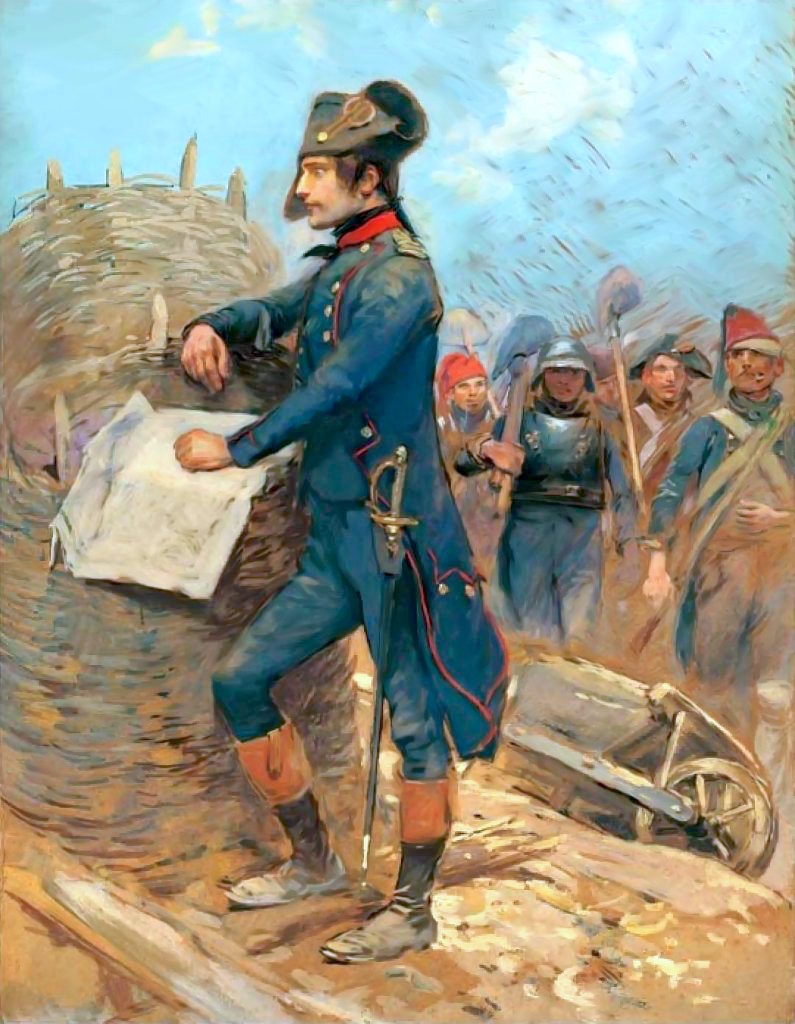
When the first Italian Republic was founded in 1802 with Napoleon as President, Melzi was appointed Vice President, responsible for managing the complex political and administrative organisation of a nation in dire need of reforms in almost all sectors of civil life.
Melzi´s personal dedication was so intense that it took him only three years to successfully create a national army, to balance the books and to reform the educational and judicial systems of the new Italian nation.
Of great relevance was also his contribution to Italian arts and crafts through his support of the Academy of Fine Arts in Milan and his commitment to protect and restore the inheritance let behind by the Austrians, including the Royal Palace in Milan and the Royal Villa in Monza.
In spite of his poor health, fatigue for his government duties and his disillusionment caused by Napoleon´s turning to authoritarianism – when Napoleon became self-proclaimed Emperor, he named himself King of Italy in 1805 – Melzi continued to play a role in government though with not as much influence as he had previously.
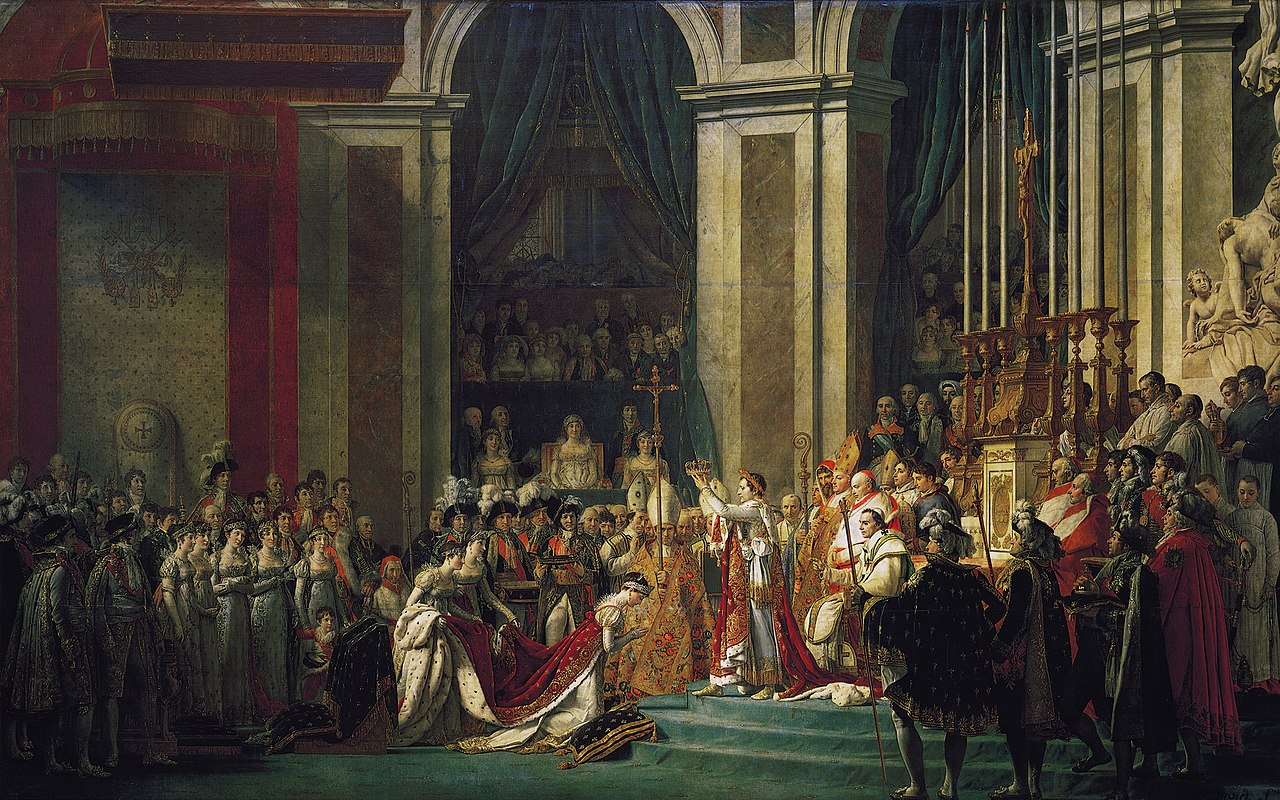
Above: Coronation of Napoleon, Notre Dame Cathedral, Paris, 2 December 1804
During the Kingdom of Italy (1805 – 1814), Melzi was appointed Grand Chancellor and Minister of Justice, supporting (and occasionally replacing) Viceroy Eugenio of Beauharnais in governing the royal domains.
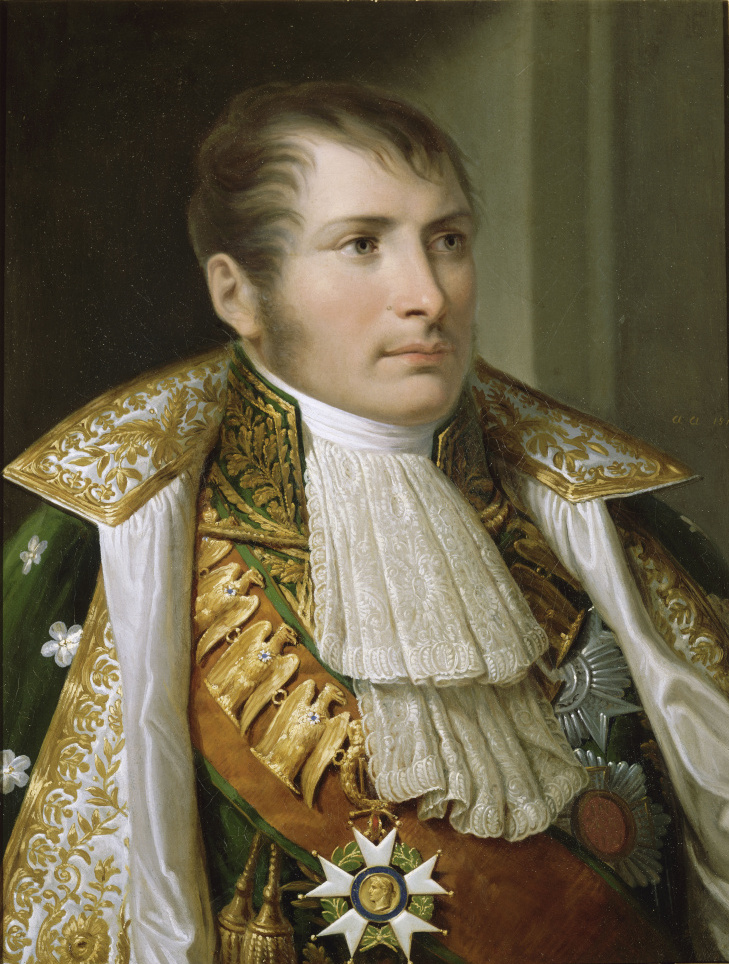
Above: Eugenio de Beauharnais (1781 – 1824)
Though Melzi remained on good and constant terms with Napoleon, Melzi longed for a more intimate and less demanding life.
When Melzi would visit the Villa Loppia of his friend Paolo Taverna, Melzi regarded Bellagio as a place desireable for both physical and spiritual recovery, owing to its peacefulness, climate, landscape beauty, the spontaneity of its people and their unaffected way of life.
Though he was of high aristocratic rank, Melzi was not rich, so it wasn´t until December 1807 that his wish for his own Villa was realised when Napoleon named him the Duke of Lodi and granted him a large annual income as an award for “his accomplishments in the field of public administration” and in memory of their encounter in Lodi ten years before.
The 20 December 1807 decree reads:
“Melzi was the first Italian to bring us on the battlefield of Lodi the keys and the confidence” of the city of Milan.
Work began on the Villa Melzi.
Bellagio has attracted people since ancient times for its location for military and commercial purposes and its attractiveness for leisure.

Above: Bellagio, Lombardy, Italy
According to tradition, Pliny the Younger (61 – 113 AD) testified to the region´s attractiveness when he wrote his friend Voconius Romanus in 104 AD, explaining why he was setting his Villa Tragedia here.

Above: Statue of Pliny the Younger, Santa Maria Maggiore Duomo, Como
Located at the tip of the peninsula that separates the two branches of the Lago di Como, Bellagio enjoys a privilieged fame as compared to the many admirable places elsewhere along the lake, for it possesses a unique multifaceted landscape of everchanging light nuances and a kaleidoscope of perspectives and sights,
Such qualities were written about by Sigismondo Boldoni in his work Larius (1606), when the Spanish dominated Bellagio.
Above: Sigismondo Boldoni
This trend never reversed.
On the contrary, it increased in the 18th century after the Spanish left Lombardy to be replaced by the Austrians, who would build many residences in Bellagio and wherever they could on the shores of Lago di Como to spend their holidays.
As remarked by Carlo Amoretti in his Viaggio da Milano ai tre laghi Maggiore, di Lugano e di Como (1824), they shaped a delightful surrounding, enjoyed shelter from hot summers to their Villas that were accessible not only by boat but as well by the Valsassina road of ancient Roman origin.

Above: Carlo Amoretti (1741 – 1816)
By the advent of Melzi, Bellagio was the most populated town of the lake, surpassed only by Como and Lecco.
According to the anonymous manuscript Cronachette della villaggiatura (Holiday Chronicles), Melzi considered Bellagio as a “buen retiro”, a place of relaxation, far from political duties, where the mind and body could recover.
Sadly, the Duke of Lodi enjoyed his wonderful retreat for only a short time.
In the last three years of his life, Melzi stayed in his Villa 27 days in 1813, two months in 1814 and another two months in 1815.
Despite these short periods of time, the Villa began to acquire fame as a distinguished house of hospitality.
Among Melzi´s guests were the Viceroy of Italy and his wife Augusta Amalia of Baveria, and the painter Giuseppi Bossi.

Above: Self Portrait, Giuseppe Bossi (1777 – 1815)
The typical day of the Duke began at 9 am when he attended church services officiated by his personal chaplain, followed by breakfast and then work began on his various charitable activities for local people in need.
According to the Holiday Chronicles, Melzi showed great concern both for the single destinies of the individuals he met as well as the general progress of the community.
In spite of his poor health – the Duke suffered from gout – Melzi liked to spend his time walking slowly and meditating in his garden, cheered by the luxuriant vegetation and the magnificent lake landscape that could be admired from his property.
Tiny and slender, Melzi nevertheless inspired respect.
He used to wear simple country clothes but in a refined way: long trousers with a large, well-shaped white hat and a thin cane stick to support him during his walks.
Melzi used to have lunch at 3 pm, eating with other guests in enjoyment of conversation in the absence of servants.
At 10 pm he would retire for the night.
The unknown author of the Holiday Chronicles writes in dismay that Duke Francesco left Bellagio and moved to Milan in October 1815 never to return.
Melzi died on 16 January 1816.
His mortal remains were brought back to the Villa two years after his death to be buried in the Oratory.
The estate has remained in the hands of the Melzi family, though the owner surname would change through the course of time.
The Villa passed on to Francesco´s nephew Giovanni (1788 – 1832).
Stendhal visited Villa Melzi in July 1817, where he enjoyed the gardens and the scenery and gazed upon the bust of Francesco in the oratory, as we can read in Stendhal´s travel journal Rome, Naples et Florence en 1817.

Above: Stendhal
In 1825, the Villa Melzi received a visit by the Austrian Emperor Francis II.
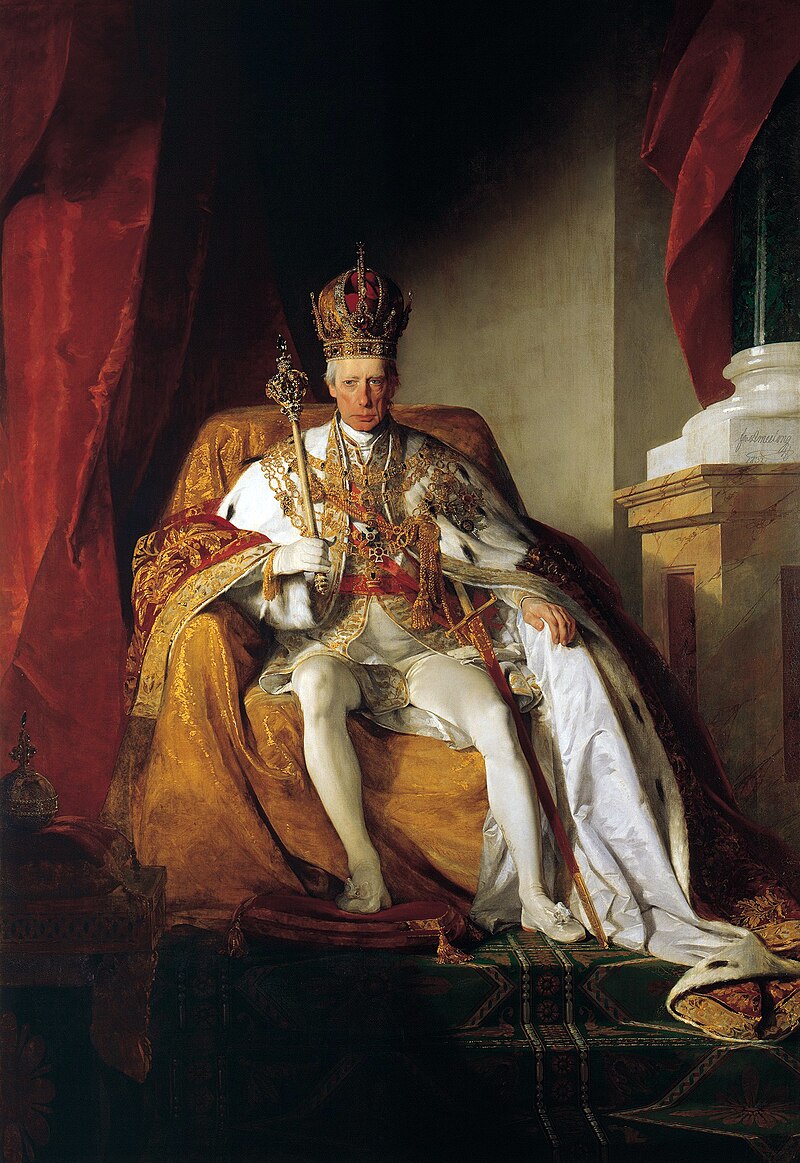
Above: Francis II (1768 – 1835)
The third Duke, Ludovico (1820 – 1886) entertained Austrian Emperor Ferdinand I and his wife Maria Anna of Savoy in 1838.

Above: Ferdinand I of Austria (1793 – 1875)
Thanks to the diffusion of travel literature, the Villa came to be popular not only among a narrow circle of the Duke´s friends, but among a larger number of people as a result of the article “Le lac de Come”, published in 1838 in the Revue et Gazette Musicale de Paris, wherein we learn that musician Franz Liszt stayed in Bellagio with his lover Marie d´Agoult in the autumn of 1837.

Above: Franz Liszt (1811 – 1886)
The lovers used to go “to the gardens of Villa Melzi to relax beneath the plane trees in the hottest hours of the day” to read Dante´s Divina Commedia before the garden Monument dedicated to Dante and his beloved Beatrice, which inspired Franz to write his subsequent famous Dante Sonatas.

Above: Dante degli Alighieri (1265 – 1321)
Franz and Marie were not among the guests of the family Melzi, but, like other travellers then and now, they could enjoy the gardens which, even then though private property, were almost always open to visitors.
By 1856, strangers were allowed to visit the Melzi gardens with money collected by the gardener.
Among the guests who visited the Villa before the world was engulfed in the wars of the 20th century were Russian Tsarina Maria Fyodorovna (1847 – 1928), Princess Marie von Radzwill, King Albert of Saxony (1828 – 1902) and his consort Carola of Sweden in May 1885.
We are told of their enthusiastic admiration for the beauty of the place, their pleasant walks among the plane tree path, the wonderful flower arrangements offered by the Duke Lodovico and Duchess Josephine.
In October 1890 the Villa received King Umberto I of Italy and his entourage, who, though only staying one day, were said to deeply admire the place and declared it one of the most “beautiful of the Como basin”.

Above: Umberto I of Italy (1844 – 1902)
By the start of the first decade of the 20th century, access to the gardens by visitors was regulated by entrance tickets.
In 1923, on the death of Duchess Josephine, Villa Melzi passed on to her daughter from a previous marriage, Luisa (1854 – 1937), who had in 1878 married the Prince of Molfetta, Giancarlo Scotti (1854 – 1927).
Their firstborn son, Tommaso (1878 – 1966), an intellectual, writer and Ambassador to Madrid and London, inherited the Villa from his mother.
Anti-Facist from the beginning, Tommaso had to seek refuge in Switzerland in 1943.
Soon after the Scotti family was officially expelled from Italy and their property was requisitioned by the Italian Social Republic, headed by Mussolini, to house the Aviation Ministry and the diplomatic seats of the countries that had acknowledged the new Fascist state.

Above: Benito Mussolini (1883 – 1945)
(See Canada Slim and the Apostle of Violence for more about Mussolini.)
At the conclusion of the Second World War, Villa Melzi was restored back into the hands of the Scotti family.
Wandering about the gardens of Tommaso´s grandson, we explored the grounds of the Villa Melzi.
Learning of the property´s history I felt like a pauper who had stumbled into a prince´s gardens.
My wife and I, despite my wife´s profession, can, at best, be described as “middle class”.
My own origins are far humbler than my wife´s and can be quite generously described as “lower class” by Canadian standards.
Yet here we were wandering in gardens that had seen writers and musicians, kings and queens, admiring the same types of flora and the same majestic views of the lake that they had enjoyed.

Here there be stone plaques, grotesque masks and mythological statues.
Within these gardens stands an oddity called the Infamous Column, a memorial stone built in 1364 for the sole purpose of disgracing the memory of the Venetian nobleman Bajamonte Tiepolo who had conspired against the Venetian Republic ruled by Doge Pietro Gradenigo.
The Infamous Column originally stood upon the ruins of the Tiepolo house – destroyed by the Gradenigo government – then it was relocated near the Sant´Agostino Church to make it more visible as a warning to the citizens of Venice to remain loyal to their city.
The Column´s epigraph – now eroded owing to the passage of time – accuses Tiepolo of “wicked treason” to the Republic:
“This land belonged to Bajamonte Tiepolo and it is now public as a consequence of his wicked treason and may be shown forever as a warning to everyone.”
The disgracing monument remained in Venice until 1785.
Here in the garden, one sees the small pink and grey granite statue of Rahotep, a high dignitary during the reign of Pharoah Ramses II, as well as a statue of the Egyptian goddess Pakhet with her lion´s head upon a woman´s body.

Overlooking the lake is the Moorish Pavilion with sculptures dedicated to Ferdinand I and his consort Maria Anna and Duke Lodovico and Duchess Josephine.
Outside the Pavilion stands the Monument to Dante and Beatrice, showing Beatrice consoling Dante after it was prophised that he would be exiled but her promising him that there is a superior divine justice that will sustain him.
Visited by Henry Wardsworth Longfellow, the Monument´s inscription was translated into English and reads:
“And the lady who to God was leading me said:
“Change thy thought.
Consider that I am near unto Him who every wrong disburdens.”
Unto the loving accents of my comfort I turned me around.”
Here on the grounds of Villa Melzi, Apollo looks at the sun while Meleagro kills a wild boar.
Sea monsters rise from the water lily fountain and lion-sphinxes guard the Villa staircase.
Wander through the grotto, stroll by the leisure gondola and beyond the stone bridge jetty and view the bronze bell that hangs by the western wall.
Here there be Japanese cedars casting shade upon a Japanese pond and Canadian giant thuja – wood once used to make totems and canoes.
Here there be imposing Florida bald cypress trees, the thick wood of Japanese camillias and maples, holm oaks and mighty California redwoods, Oriental spruce and gingko maidenhair, dwarf palms and Italian cypress, holly olive and cleyera shrubs, cinnamon camphora and Mexican pine, Mediterranean heath and Montezuma pine, azaleas beneath plane trees, red beech and elm trees, bamboo fodder for pandas and black Chinese conifers, Himalyan and Lebanese cedar, the giant dogwood and the North American cedar, cork oak and crape myrtles, cork oak and fragrant olive, Chilean wine palm and Scots pine, weeping beech and strawberry fields, common box and Austrian pine, southern magnolia and Rhododendron, mimosa and tulip.

No, Mary Shelley, the Italians here do know what flowers and a flower garden are.
Lunch time delayed, the wife realises that the husband needs to be fed before maritial strife emerges.
We cast ourselves out of this Garden of Eden, these gardens of Melzi, simply two more anonymous names in a yet-to-be-written Holiday Chronicles.
We must dance and sing while we can.
Winter is coming….






